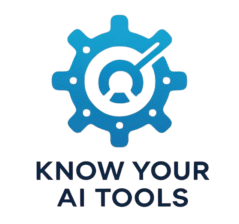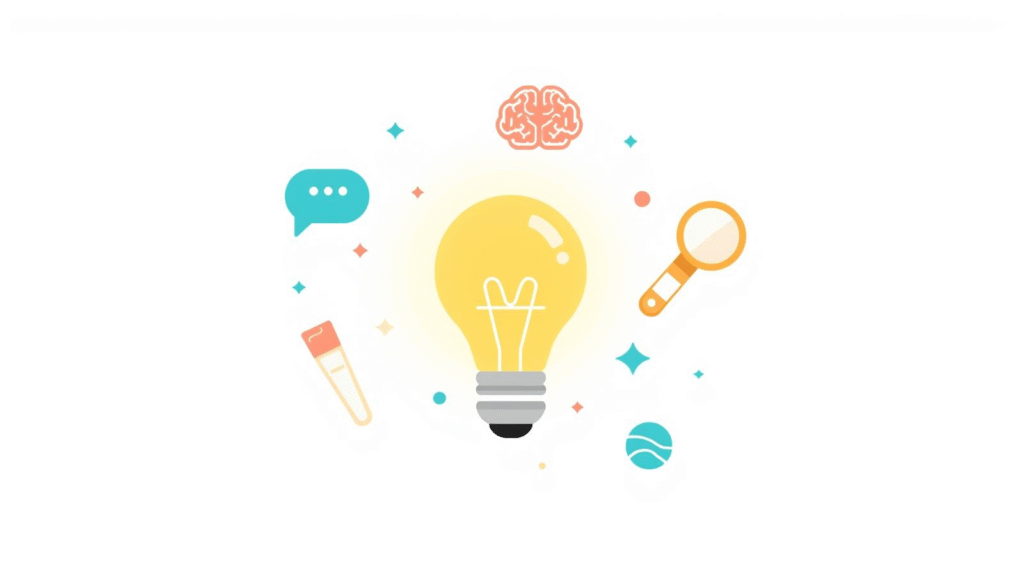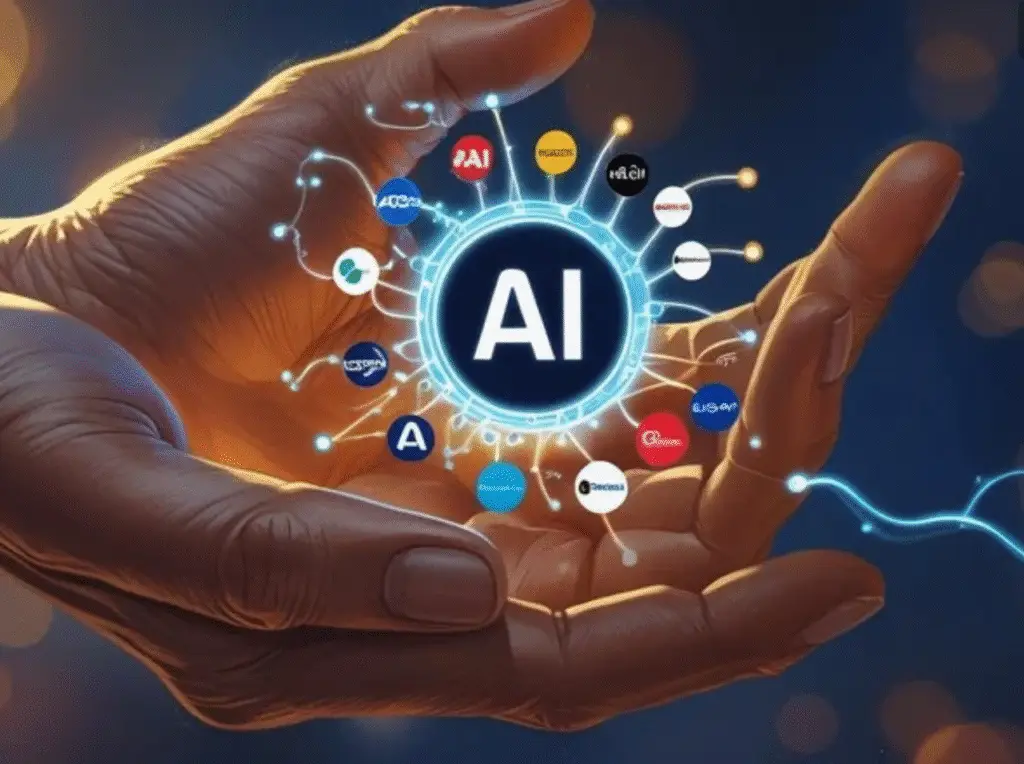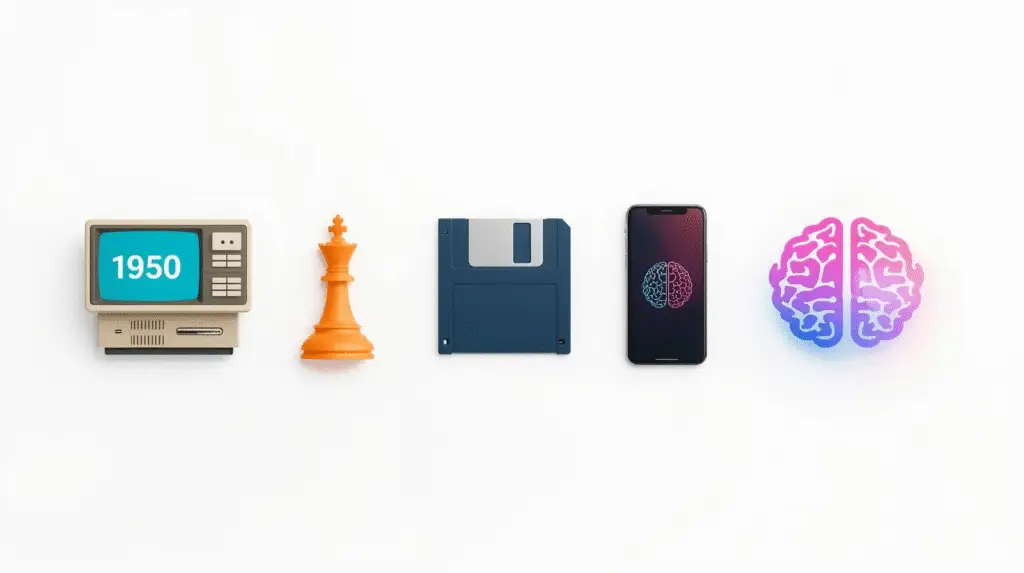If you’ve been online, watched the news, or even just chatted with friends lately, you’ve probably heard the term AI (Artificial Intelligence). Some people are excited about how it can save time and spark creativity, while others are worried about it replacing jobs or becoming “too powerful.” And then there are plenty of people quietly wondering: what exactly is AI, and what can it do for me?
The truth is, AI isn’t a mysterious force that suddenly appeared overnight. It’s been quietly developing for decades and is already helping you every day – probably without you even realising it. In this guide, we’ll break AI down into plain English, look at where it shows up in your daily life, bust a few common myths, and show you how to start using it confidently.
What Is Artificial Intelligence?
Artificial Intelligence is the science of teaching computers to do things that normally require human intelligence, like recognising speech, understanding language, making decisions, and learning from experience.
Traditional software follows strict step-by-step instructions, like a cake recipe. AI is more like a baker who learns from every cake they make — improving the taste, texture, and decoration over time.
AI isn’t one single technology. It’s an umbrella term covering different types:
- Machine Learning (ML) – computers learn patterns from data, like spam filters spotting junk emails.
- Natural Language Processing (NLP) – understanding and responding to human language, like ChatGPT or Siri.
- Computer Vision – analysing images or video, such as recognising faces in photos.
- Generative AI – creating new content (text, images, audio, or video) based on what it has learned.
Where You’re Already Using AI
AI might sound futuristic, but you probably use it every day without thinking about it.
- At home: Smart speakers play music, control lights, or answer questions. Streaming platforms like Netflix suggest shows based on your viewing habits.
- On your phone: Voice assistants answer questions, predictive text suggests your next word, and photo apps group pictures by faces or events.
- In your car: Navigation apps suggest faster routes using real-time traffic data, and driver-assist features warn you if you’re drifting out of your lane.
- In everyday transactions, Banks detect fraud, and online shops recommend products based on your browsing history.
By the end of a typical day, you’ve probably interacted with AI dozens of times without noticing.
A Quick History of AI
AI might feel like a modern invention, but the idea has been around for decades.
1940s–1950s: Mathematician Alan Turing famously asked, “Can machines think?” and created the Turing Test to measure if a machine could mimic human conversation. Computers were huge and limited, but the idea had been planted.
1950s–1970s: The term “Artificial Intelligence” was coined in 1956. Early AI programs could play chess or solve maths problems, but progress was slow and computers were expensive.
1970s–1990s: The “AI Winter” – hype cooled, funding dried up, and AI research slowed, surviving only in niche tasks like handwriting recognition.
2000s–2010s: Faster computers and the internet triggered the machine learning era. Instead of telling computers exactly what to do, researchers trained them to find their own patterns in data. This led to breakthroughs like Siri, Google Translate, and accurate spam filters.
2020s–Now: We’re in the AI boom. Tools like ChatGPT can write almost anything, image generators create artwork in seconds, and AI helps businesses predict trends and improve customer service. What’s different now is that AI is accessible to everyone – not just scientists or programmers.
Busting Common AI Myths
AI can seem scary, so let’s clear up a few common myths:
Myth: AI will take all our jobs.
AI will change some jobs, but it will also create new ones – just like social media created digital marketing careers that didn’t exist 20 years ago. The key is learning how to work with AI, not compete with it.
Myth: AI understands everything.
AI doesn’t “understand” like humans do. It recognises patterns and predicts what’s likely next. It can still get things wrong, especially if its training data is biased or incomplete.
Myth: AI is dangerous.
There are valid concerns about bias, privacy, and misuse, but most AI tools today are narrow and task-specific – they’re not plotting world domination.
How AI Actually Works (Without the Jargon)
At its core, AI is about getting computers to act in ways that feel smart to us — by learning from data and improving over time.
Imagine teaching a child the difference between cats and dogs. You’d show them lots of pictures, saying “cat” or “dog” each time. Eventually, they’d spot patterns – cats have pointy ears, dogs have longer snouts. AI does the same, but with millions of examples.
Here’s the basic process:
- Feed it data — words, images, or numbers (like books, photos, or shopping stats).
- Find patterns — it spots similarities and differences humans might miss.
- Make predictions — guessing the next word in your message, suggesting a film you’ll like, or flagging suspicious bank activity.
- Learn and improve — every new example helps it get better. This is called machine learning.
You don’t need to know coding to use it. The main thing to understand is that AI gets better the more good examples it sees.
Trying AI Yourself (No Tech Skills Needed)
You don’t have to build your own AI to benefit from it. Here are three beginner-friendly tools you can try today:
• ChatGPT — ask questions, get writing help, or brainstorm ideas. Try our Beginner’s Guide to Using ChatGPT (Step-by-Step) to get started.
• Canva — design social media posts or planners easily, with built-in AI writing and image tools. Create AI images based on prompts.
• Grammarly — instantly check grammar, tone, and clarity while you write.
All have free versions, so you can experiment safely without spending anything.
How AI Can Help You Right Now
Here are just a few ways AI could save you time today:
- Automate repetitive admin tasks like writing emails or scheduling.
- Get quick explanations of tricky topics.
- Spark creativity with instant brainstorming prompts.
- Stay organised with smart task lists and calendar reminders.
To see more ideas, read 10 Ways to Use AI to Save 10+ Hours a Week.
Final Thoughts: Why AI Isn’t as Scary as You Think
AI is simply a tool. Like a calculator, it won’t replace you — it’s here to help you do more, faster, and with less stress. The more you understand how it works, the more confident and creative you can be with it.
Instead of fearing AI, start small, experiment, and see how it fits into your life. You might be surprised by how quickly it becomes second nature.
For a clear external overview, explore MIT’s beginner-friendly AI guide.



